Derived its name from hot water springs, Garampani Sanctuary is located at Diphu in Karbi Anglong district of the Karbi Anglong Autonomous Council, Assam, India. Garampani means “hot water” in the local language. It was notified as a Garampani Wildlife Sanctuary covering an area of 6.0 sq. km in 1952 vide notification No, FR. 199/52 dated 10/07/52. The sanctuary is famous for its hot springs and waterfalls. It is the oldest sanctuary in Assam. It is surrounded by Nambor Wildlife Sanctuary and has rich in bio-diversity with more than 51 rare species of orchid, many rare birds and habitats for hoolock gibbons and golden langurs.
Garampani Sanctuary Location
The Garampani Wildlife Sanctuary area is just about 6.0 sq. km The entirety of the Garampani Sanctuary lies within the jurisdiction of the Karbi Anglong Autonomous Council, Assam. This biodiversity region is rich with a plethora of rare and endangered plant and animal species. This wildlife sanctuary is located at coordinates latitude 26°42’ North and longitude 93°725’ East with an elevation of 117 meters above mean sea level (MSL). It falls under the civil jurisdiction of Karbi Anglong District and is located under Bokajan subdivision. The National Highway 39 connecting Numaligarh to Dimapur passes through the eastern boundary of this protected area.
The distance of Garampani Sanctuary is 64.2 km from Dimapur, 70 km from Jorhat, 330 km from Guwahati and Kaziranga National Park is 101km away.
Garampani Wildlife Sanctuary Location Google Map
Garampani Sanctuary Map
The Garampani Sanctuary is a protected area situated in Diphu within the Karbi Anglong District. It shares its northwest boundary with another protected area called Nambor Doigrung Wildlife Sanctuary which is located in the neighboring Golaghat District. Its eastern boundary adjoins Golaghat District while its southern boundary connects with Nambor Wildlife Sanctuary. This geographical transboundary allows for the free movement of wildlife between the two sanctuaries in the region.
Location, Area, Name, and Administration
Latitude : 26°42’0’’ North
Longitude : 93°725’0’’ East
District : Karbi Anglong District
Range : Divisional Forest Officer, Karbi Anglong East Division
Name : Garampani Wildlife Sanctuary
Park Area : Total Area of Garampani Sanctuary: 6.0 Sq. Km
Administration : Divisional Forest Officer, Karbi Anglong East Division, Diphu
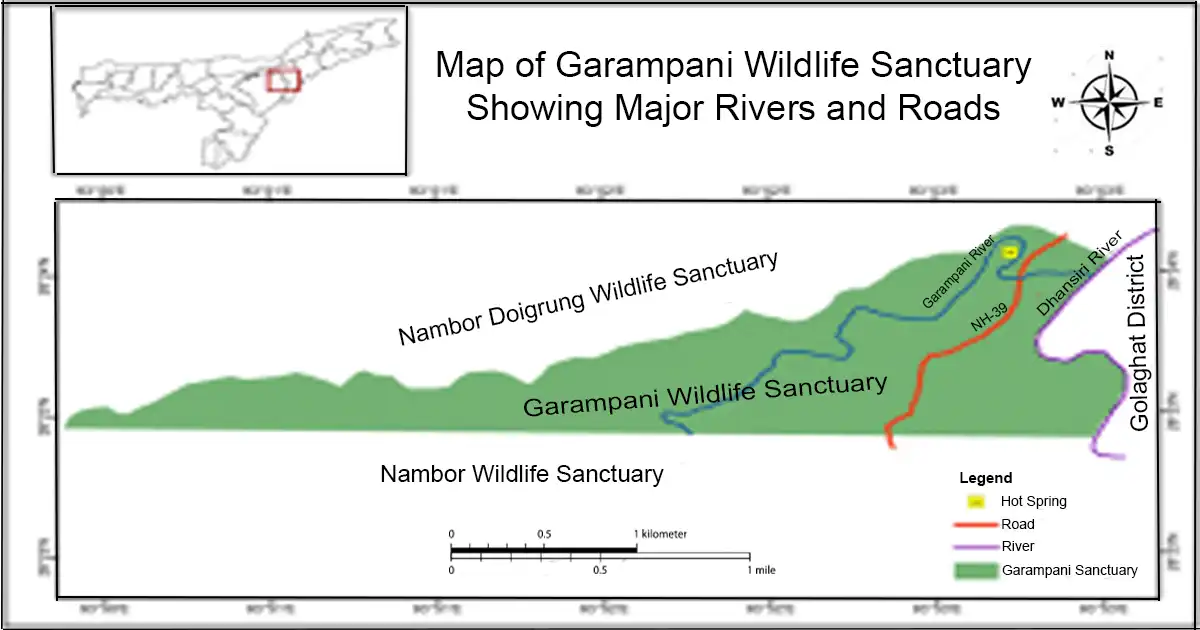
Garampani Wildlife Sanctuary Geography and Climate
1. Geography:
Surrounded by other protected areas, the Garampani Sanctuary is a well-protected zone. The geography of Garampani Sanctuary is semi-evergreen moist deciduous forest, marshy wetlands and tropical moist bamboo brakes. The region consists of dense vegetation and flowing streams. The elevation of Garampani Wildlife Sanctuary is around 117 meters above mean sea level (MSL). The forest-stream terrains flow, Himalayan Moist Mixed Deciduous Forests of Semi-evergreen type, marshy wetlands of Garampani Sanctuary harbour rich biodiversity of flora and fauna. The Garampani River flows through the heart of Garampani Wildlife Sanctuary extending up to the Nambor Wildlife Sanctuary enhancing the area’s natural beauty and supporting to boasts a rich variety of plant and animal life.
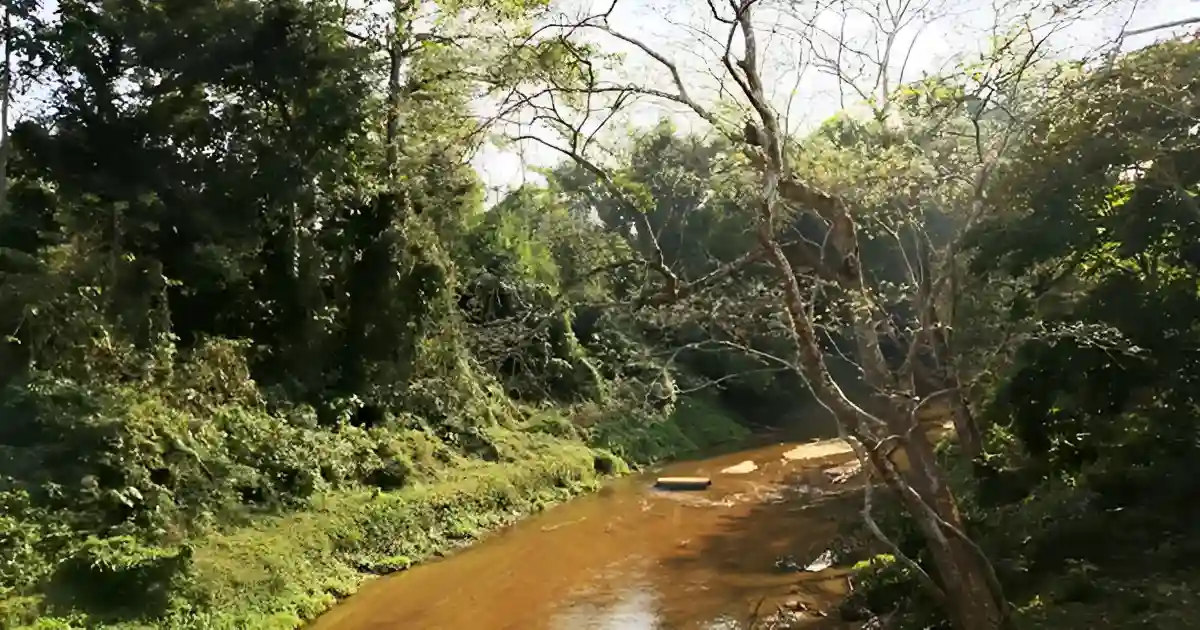
2. Climate:
Garampani Wildlife Sanctuary experiences a moist tropical climate with distinct seasonal variations. Summers bring hot and humid weather with temperatures often soaring to higher levels. In contrast, winters are characterized by dry and cold conditions offering a pleasant respite from the summer heat. Despite the varying weather patterns, the sanctuary’s abundant vegetation and meandering waterways contribute to a more moderate and favorable climate for its diverse ecosystem.
a. Pre-monsoon season (March, April & May): During this period the sanctuary prepares for the impending monsoon and the flora and fauna show unique characteristics.
b. Monsoon season (June, July & August): The region receives substantial rainfall during this time enriching the sanctuary’s biodiversity and creating a thriving environment for various species.
c. Post-monsoon season (September, October & November): After the monsoon the sanctuary exhibits lush greenery and flourishing life as the ecosystem rejuvenates.
d. Winter season (December, January & February): This season brings cooler temperatures, providing a different aspect to the sanctuary’s natural beauty and influencing the behavior of its inhabitants.
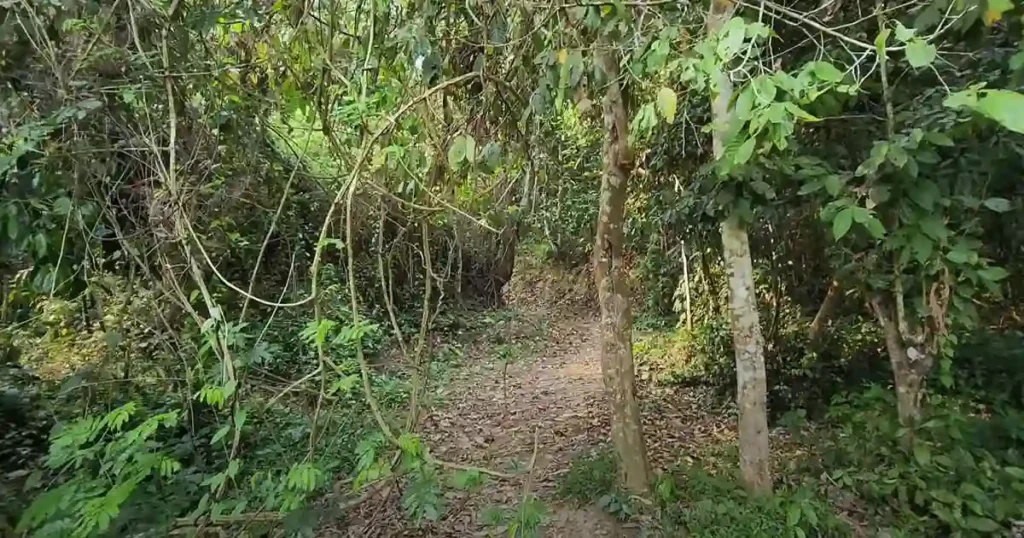
Flora and Fauna Diversity in Garampani Sanctuary
Flora: The sanctuary’s flora primarily comprises Himalayan Moist Mixed Deciduous Forests with a Semi-evergreen character along with tropical moist bamboo brakes and marshy wetlands. Researchers during the study collected data on herbaceous species, shrubs, epiphytes, climbers and wild edible fruit-yielding species in Garampani Wildlife Sanctuary using quadrats. The recorded numbers highlight the sanctuary’s rich floral diversity. Notably, climber species, particularly Delima sarmentosa hold significant importance. However, wild edible fruit species exhibit lower diversity compared to other species groups. They remain crucial for specific animal populations in providing shelter and food sources. The sanctuary’s varied plant life sustains a balanced environment, supporting a diverse range of wildlife species.
a.) Mammals: Tigers, Elephants, Gaur, Dear, Barking Deer, Rhesus macaque, Sambar, Hoolock gibbon, Wild pig, Dhole/wild dog etc.
b.) Birds: A large variety of birds including the Great Pied Hornbill, Hill Myna etc.
c.) Reptiles: Cobra, Python, Monitor lizards.
d.) Orchid: 51 rare species of orchid
e.) Butterfly: A study of butterfly diversity was conducted over three years from April 2014 to March 2017 in the Garampani Wildlife Sanctuary, Assam. During this research period, a total of 148 butterfly species from 5 families and 87 genera of the Lepidoptera order were documented. The family Nymphalidae was the most prevalent representing 45.21% of the recorded butterflies while Hesperiidae was the least dominant constituting only 8.22% of the observed species. The Garampani Sanctuary’s closed canopy zone and the vegetation near the riparian zone are the most suitable place for the butterfly.
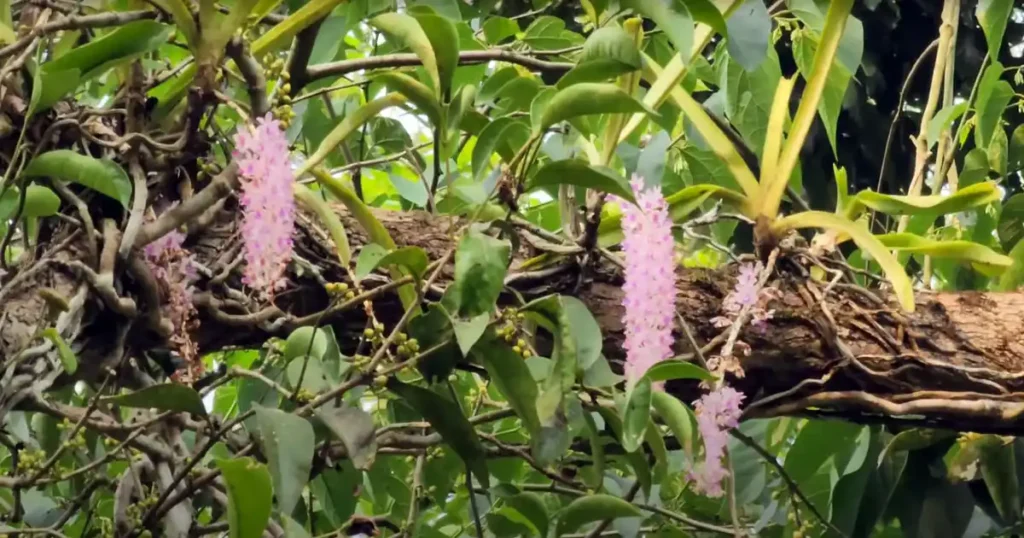
What you expect to see at Garampani Sanctuary
1. Hot Water Spring:
The Garampani Sanctuary is renowned for its focal point the famous ‘hot water spring,’ drawing a substantial number of tourists throughout the year.
Hot springs also known as Geothermal springs are a fascinating natural phenomenon caused by the emergence of groundwater that has been heated by the Earth’s geothermal energy. This heated water rises to the surface creating these unique and often therapeutic springs that attract visitors.
Its strategic location on NH-39 connecting Golaghat and Dimapur ensures a steady influx of visitors making it a popular stopover for travelers passing through the national highway.
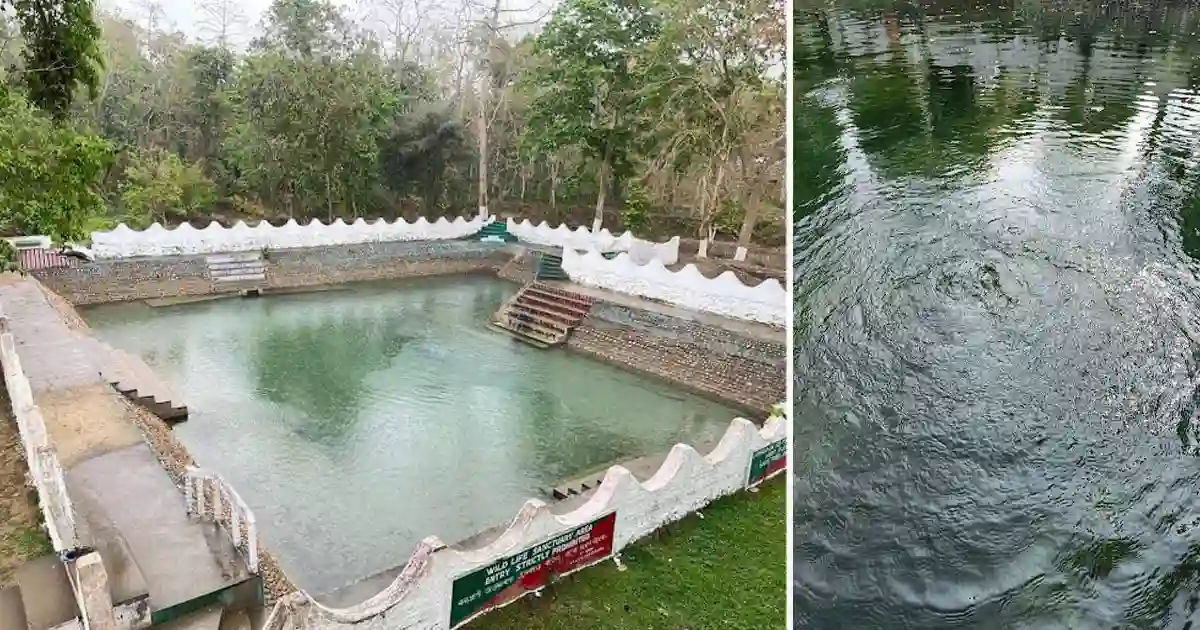
2. Hanging Bridge:
There is a captivating hanging bridge that stretches over the Garampani River in Garampany Sanctuary leading visitors to the edge of the jungle near the hot water spring. As you step onto the bridge the gentle sway beneath your feet adds to the adventure creating a sense of excitement and wonder. The thrilling experience offers breathtaking views and a unique connection with nature.
The visiting charge for the hot water spring including the hanging bridge is ₹20.00. Additionally, visitors can enjoy walking and resting in a park.
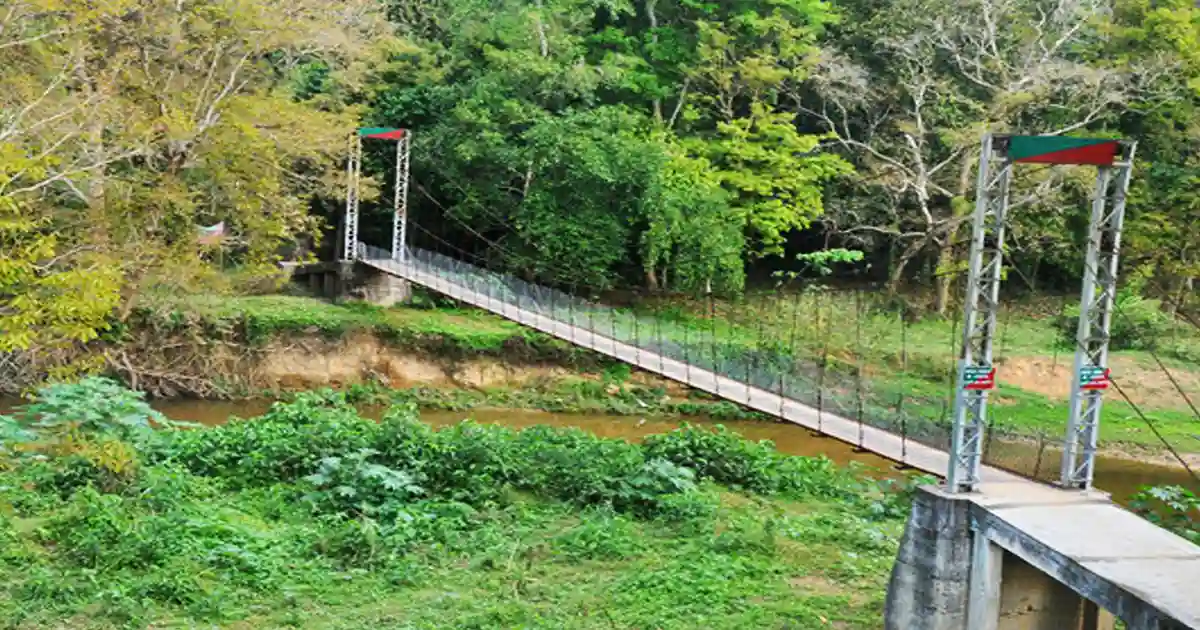
Best Time to Visit Garampany Sanctuary
The unique attraction to visit in Garampani Wildlife Sanctuary is the Hot Water Spring. The best time to experience this natural wonder is from November to April. During this period the water level of the Hot Water Spring decreases making it clearly visible as it springs forth. Visitors can touch the water and feel the warmth of its hot springs.
How to reach Garampany Sanctuary.
How to Reach Garampany Wildlife Sanctuary
By Air: The nearest airport from the Garampany Sanctuary is Jorhat Airport is 85 km away and Dimapur Airport in Nagaland is 55 km away.
By Road: Road connectivity via National Highway 39: Guwahati is a 6–7-hour drive while Golaghat, the nearest town is 25 km away.
By Rail: Furkuting Rail Junction only 27 km from the sanctuary connects well to other parts of Assam and India.
Where to stay in Garampani Wildlife Sanctuary: There are two Inspection Bungalows, one located in Golaghat town and the other in Karbi Anglong. Moreover, there is also a circuit house in Golaghat and multiple hotels for accommodation.
Conclusion
The renowned hot water spring and hanging bridge of Garampani Sanctuary make it a favourable destination for tourists throughout the year. The geothermal hot springs with their therapeutic properties extend a unique and relaxing experience. The strategic location on NH-39 ensures a steady stream of visitors making it an ideal stopover for travelers. The best time to visit is from November to April when the water level decreases extending a clear view of the spring’s enchanting beauty.
FAQ
a.) What is Garampani Wildlife Sanctuary famous for?
Garampani Sanctuary is famous for its hot water springs and is one of the oldest sanctuaries in Assam.
b.) In which city is Garampani Wildlife Sanctuary located?
Garampani Sanctuary is located at Diphu in Karbi Anglong district of the Karbi Anglong Autonomous Council, Assam, India.
c.) What animals are in the Garampani Wildlife Sanctuary?
Garampani Sanctuary has rich in bio-diversity with more than 51 rare species of orchid, many rare birds and habitats for hoolock gibbons and golden langurs.
d.) Where is Garam Pani?
Garampani Sanctuary is located at Diphu in Karbi Anglong district of the Karbi Anglong Autonomous Council, Assam, India. The distance of Garampani Sanctuary is 64.2 km from Dimapur, 70 km from Jorhat, 330 km from Guwahati and Kaziranga National Park is 101km away.
e.) Which is the oldest wildlife sanctuary in Assam?
Garampani Sanctuary is the oldest sanctuary in Assam located at Diphu in Karbi Anglong district of the Karbi Anglong Autonomous Council. Garampani means ‘hot water’ in the local language and it is famous for its hot springs and waterfalls.
You May Also Like
- Laokhowa Wildlife Sanctuary
- Dibang Wildlife Sanctuary
- Nameri National Park
- Ddibru Saikhowa National Park
- Dehing Patkai National Park
References
- Garampani Wildlife Sanctuary, https://karbianglong.gov.in/departments/forestry
- https://forest.assam.gov.in/portlets/wildlife-sanctuary#Garampani
- Garampani Wildlife Sanctuary, https://en.wikipedia.org/wiki/Garampani_Wildlife_Sanctuary
- Non-Timber Forest Product: Case Study Of Diversity In Garampani Wildlife Sanctuary, Karbi Anglong District, Assam, India,https://www.researchgate.net/publication/318723882_Non-Timber_Forest_Product_Case_Study_Of_Diversity_In_Garampani_Wildlife_Sanctuary_Karbi_Anglong_District_Assam_India
- Status of Butterfly in Garampani Wildlife Sanctuary with special reference to anthropogenic threats, https://www.researchgate.net/publication/343691665_BUTTERFLY_FAUNA_OF_NAMBOR_AND_GARAMPANI_WLS

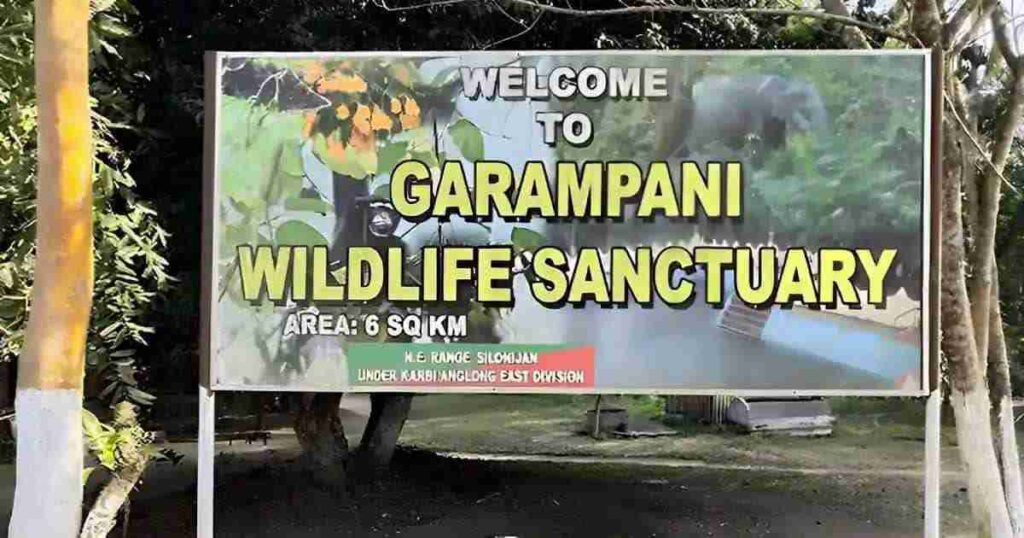
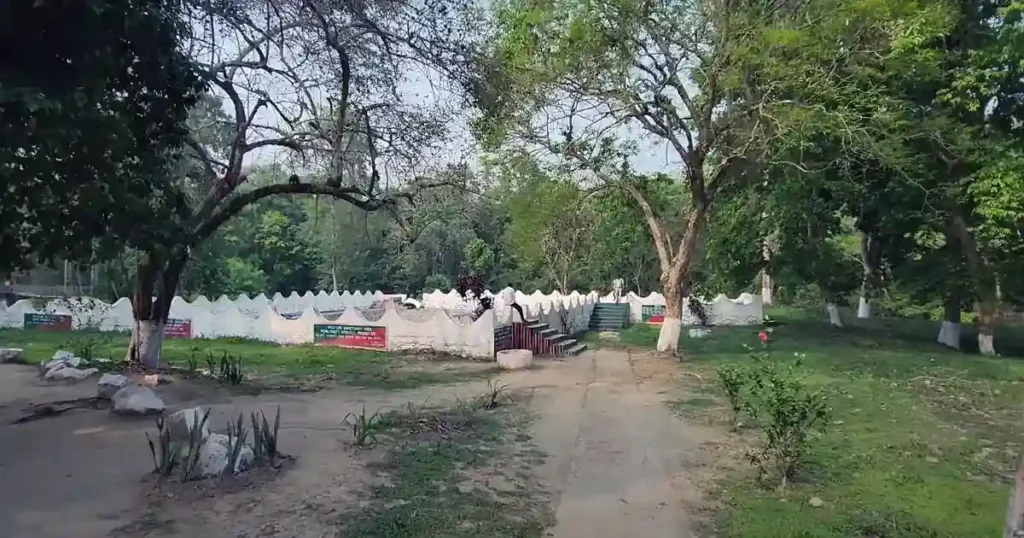

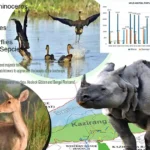
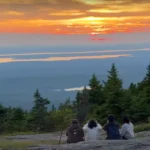
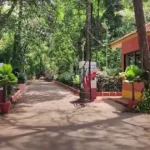
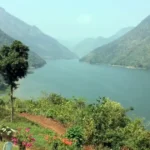


2 thoughts on “Garampani Sanctuary”